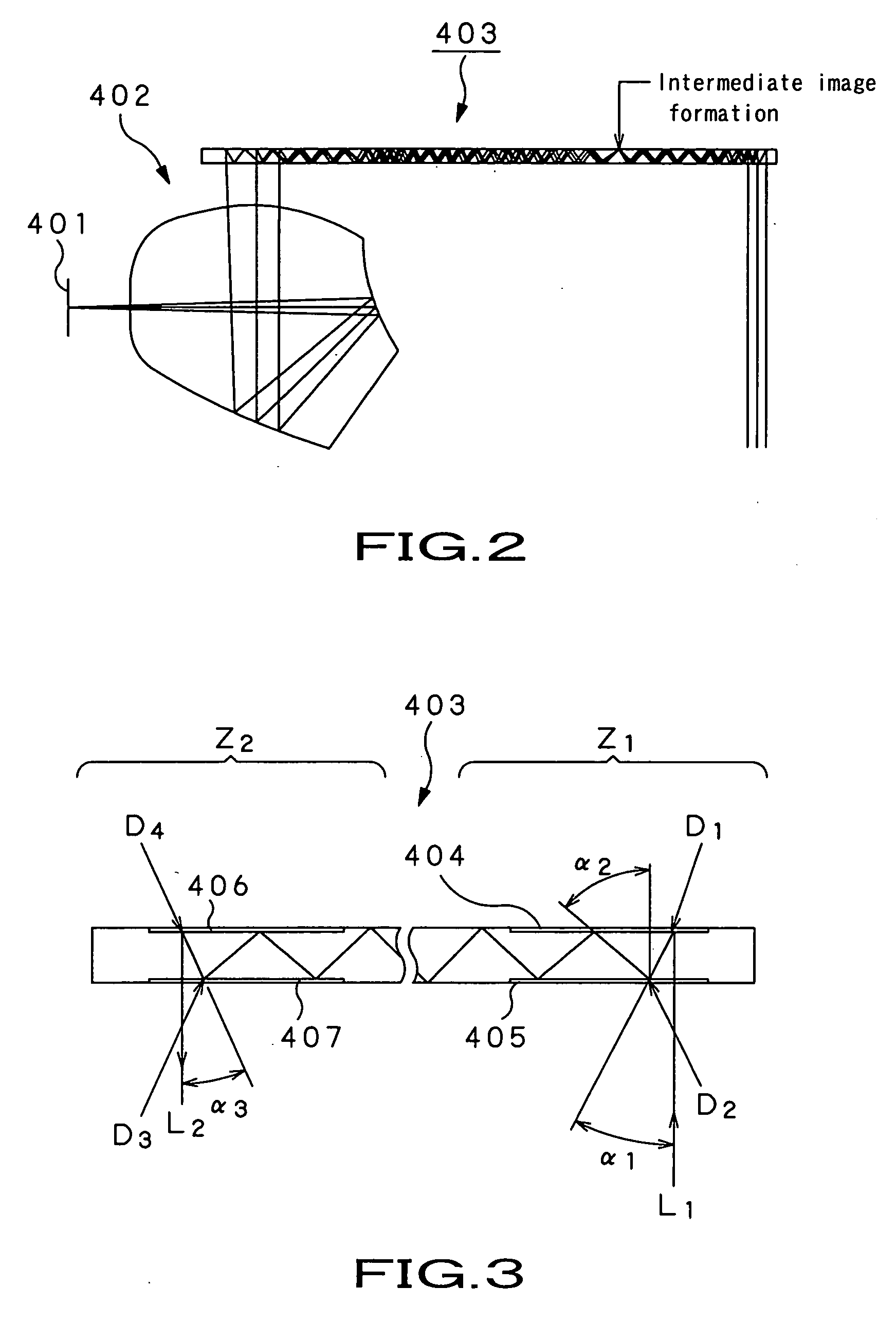Optical device and virtual image display device
an optical device and virtual image technology, applied in optics, instruments, optical light guides, etc., can solve the problems of difficult to combine or laminate the interference fringes together, the optical system of virtual image shown in fig. 1 is disadvantageous, and the lens is difficult to achieve. , to achieve the effect of reducing monochromatic aberration, reducing monochromatic aberration, and increasing image resolution
- Summary
- Abstract
- Description
- Claims
- Application Information
AI Technical Summary
Benefits of technology
Problems solved by technology
Method used
Image
Examples
first embodiment
[0098]FIG. 8 shows a virtual image display device as a first embodiment of the present invention. The virtual image display device is generally indicated with a reference numeral 10. The virtual image display device 10 includes an image display element 11 to display an image, and a virtual image optical system to guide incident display light from the image display element 11 to a pupil 16 of the viewer.
[0099] The image display element 11 is for example an organic EL (Electro Luminescence) display, inorganic EL display, liquid crystal display (LCD) or the like.
[0100] The virtual image optical system includes a collimating optical system 12, optical waveguide 13, and a first reflection volume hologram grating 14 and second reflection volume hologram grating 15 provided on the optical waveguide 13.
[0101] The collimating optical system 12 receives an incident pencil from each pixel of the image display element 11 and forms the pencils into parallel pencil groups different in angle of...
second embodiment
[0113]FIG. 11 shows a virtual image display device as a second embodiment of the present invention. The virtual image display device is generally indicated with a reference numeral 20. The virtual image display device 20 as the second embodiment of the present invention displays a virtual image of a color image. It should be noted that in FIG. 11, only light rays directed at the central angle of field are illustrated mainly for easy viewing of the drawing.
[0114] The virtual image display device 20 includes an illumination optical system 30 forming a light source, and a virtual image optical system to guide incident illumination light from the illumination optical system 30 to the pupil 16 of the viewer.
[0115] The illumination optical system 30 includes an LED (light-emitting diode) light source 31R to emit red light, LED light source 31G to emit green light, LED light source 31B to emit blue light, and a color synthesizing prism 32.
[0116] Red light, green light and blue light emi...
third embodiment
[0137]FIG. 14 shows a virtual image display device as a third embodiment of the present invention. The virtual image display device is generally indicated with a reference numeral 40. The virtual image display device 40 as the third embodiment of the present invention displays a virtual image of a color image similarly to the virtual image display device 20 as the aforementioned second embodiment. It should be noted that in FIG. 14, only light rays directed at the central angle of field are illustrated mainly for easy viewing of the drawing.
[0138] The virtual image display device 40 includes an illumination optical system 30 also used in the second embodiment, and a virtual image optical system to guide incident illumination light from the illumination optical system 30 to the pupil 16 of the viewer.
[0139] The virtual image optical system includes a collimating optical system 22, reflecting mirror 45 to reflect a parallel pencil coming from the collimating optical system 22, MEMS ...
PUM
 Login to View More
Login to View More Abstract
Description
Claims
Application Information
 Login to View More
Login to View More - R&D
- Intellectual Property
- Life Sciences
- Materials
- Tech Scout
- Unparalleled Data Quality
- Higher Quality Content
- 60% Fewer Hallucinations
Browse by: Latest US Patents, China's latest patents, Technical Efficacy Thesaurus, Application Domain, Technology Topic, Popular Technical Reports.
© 2025 PatSnap. All rights reserved.Legal|Privacy policy|Modern Slavery Act Transparency Statement|Sitemap|About US| Contact US: help@patsnap.com



